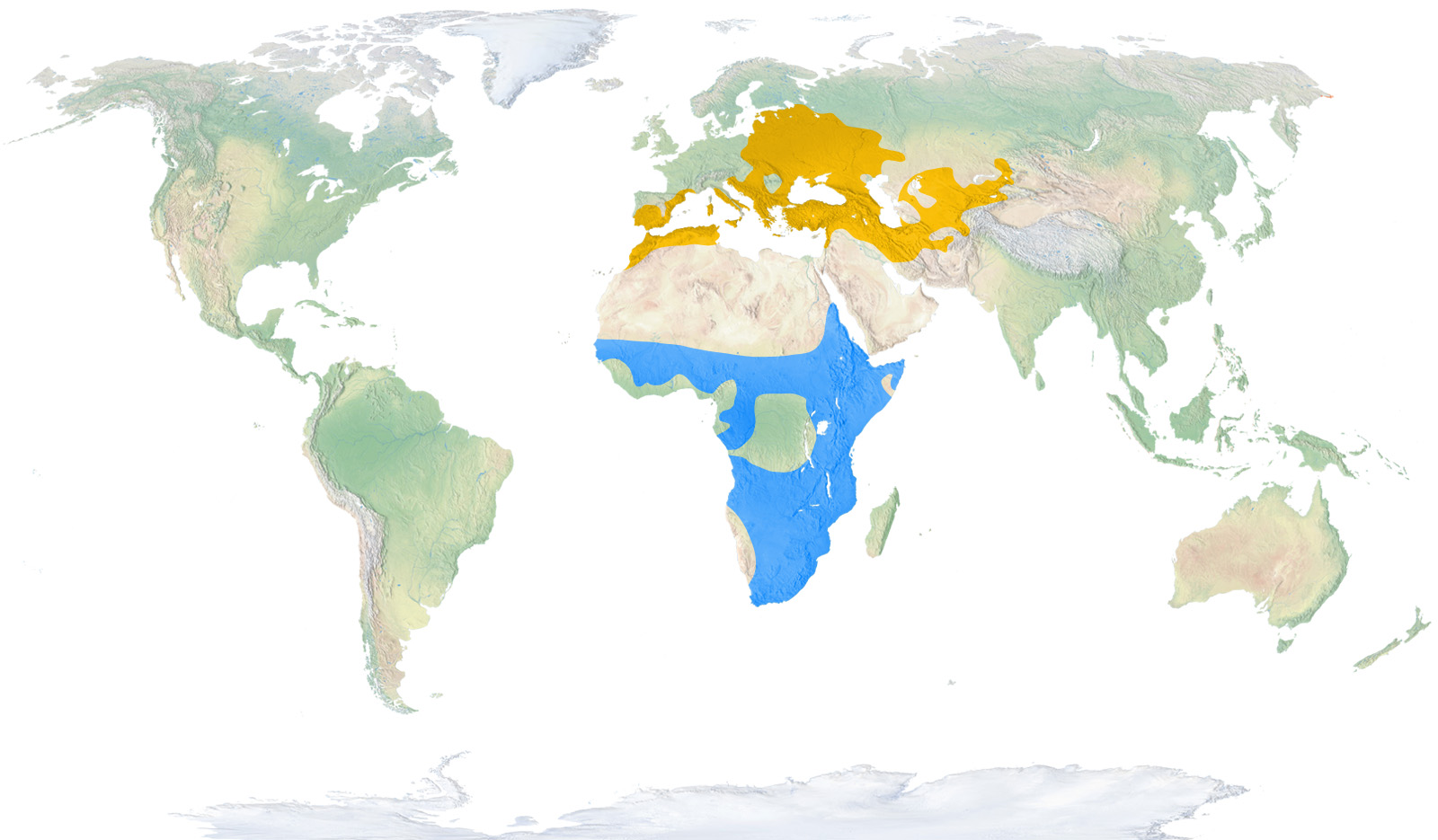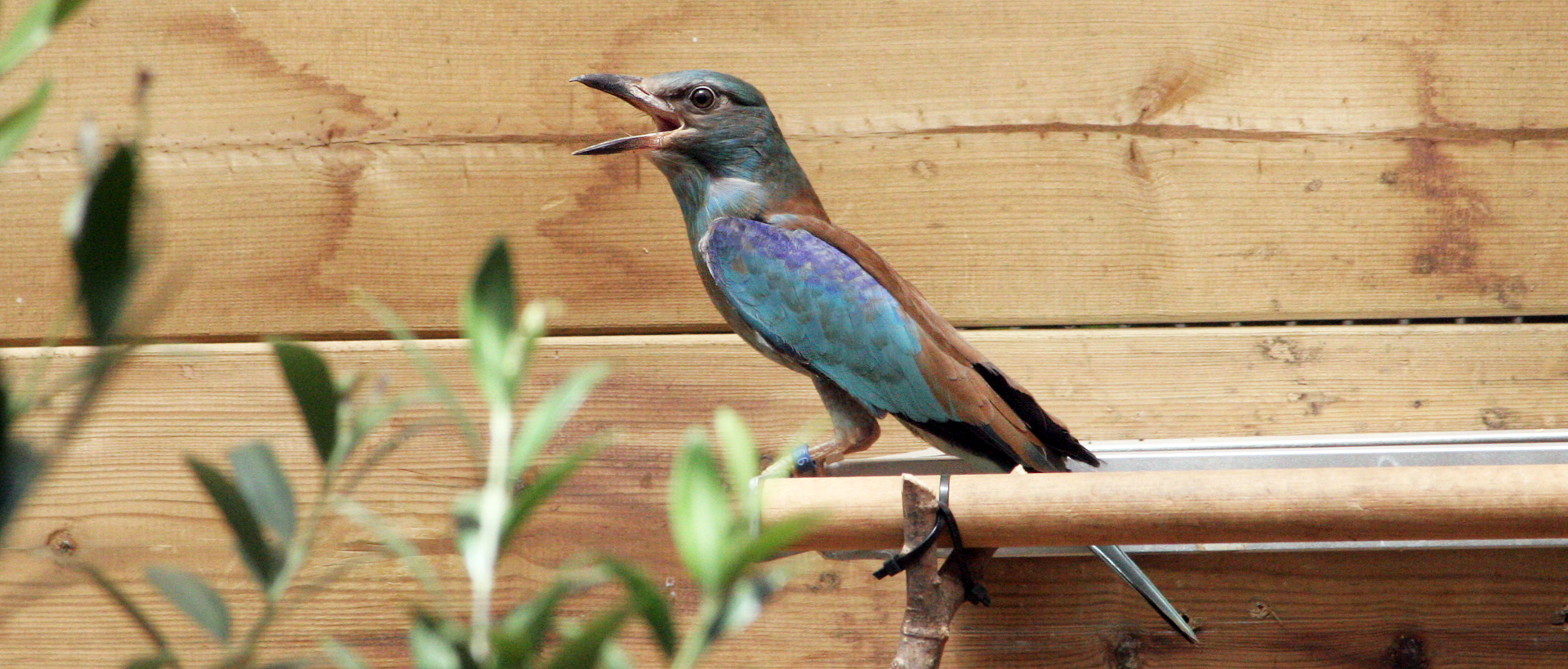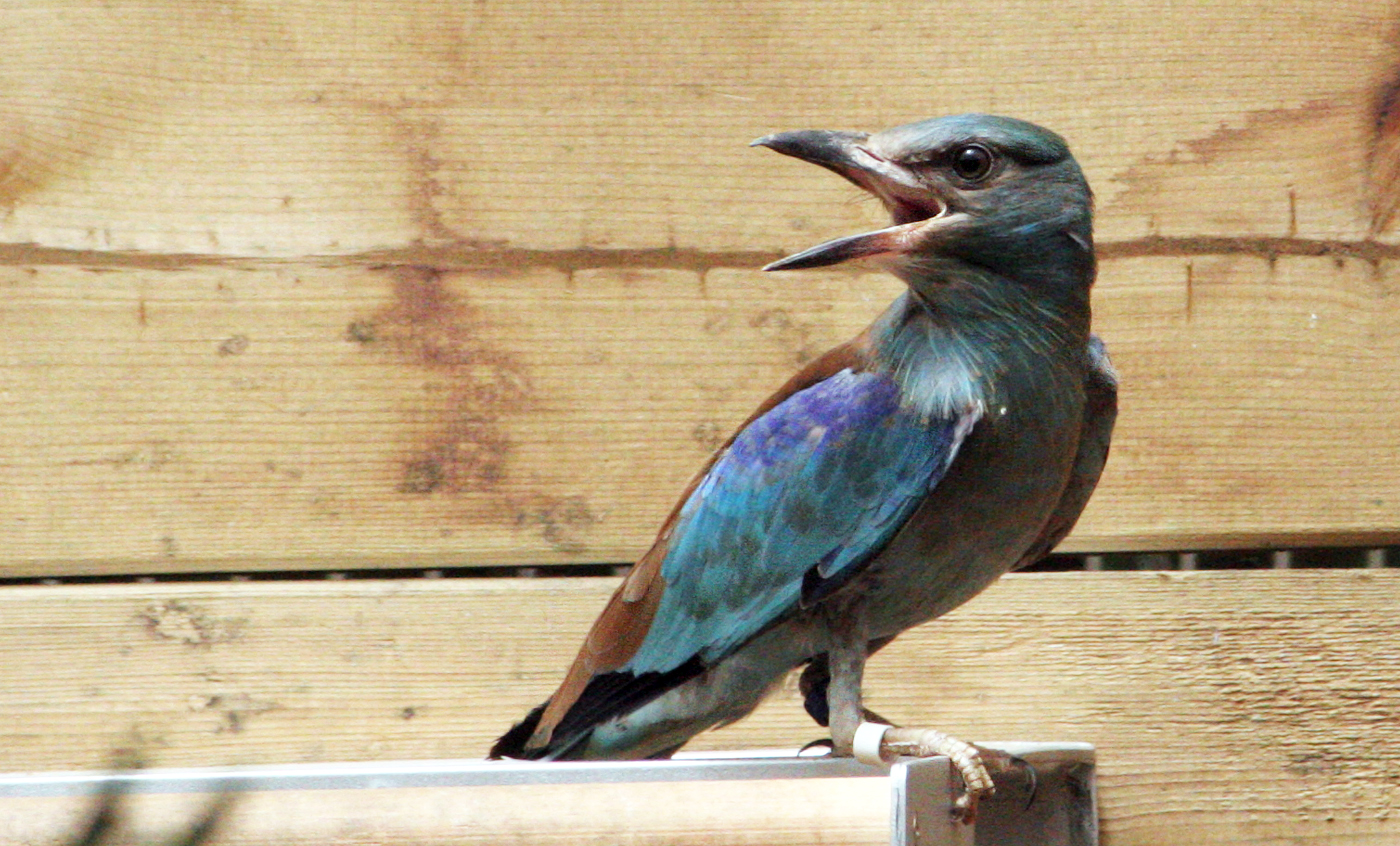European roller
This colourful migratory bird arrives in our lands from Africa between April and May and starts off on its long southward journey again in the autumn, after breeding. Nests in holes in trees or in human constructions.
They primarily feed on insects and occasionally on small vertebrates. At present, their populations have been affected by the destruction of their habitat and by the intensive use of insecticides, which make the amount of available pray decrease.
Natural habit
North Africa and the Iberian Peninsula, Mediterranean european zone, and central Europe to the Caspian Sea and Middle East. Wintering south of the Sahara.

- Distribution / Resident
- Breeding
- Wintering
- Subspecies
Risk level
- Extint
- Extint in the wild
- Critically endangered
- In Danger
- Vulnerable
- Near threatened
- Minor concern
- Insufficient data
- Not evaluated
Taxonomy
Physical characteristics
Biology
Reproduction
Biology
Medium sized bird close to 32 cm long, which is distinguished by its blue and turquoise plumage, especially at the wing shoulders, where the blue is darker and more eye-catching. The dorsal is light brown and the flight—or primary—feathers are black. It has a powerful thick blackish beak.
It generally inhabits warm sunny spaces from plains to 100 metres high, although it can locally occupy higher altitudes up to 2500 metres. It tends to select open areas with scattered holm oaks and savannahs with low vegetation, with diverse surrounding wooded areas.
They primarily feed on insects and occasionally on small vertebrates.
It nests in holes in trees or in human constructions in May and June, and is territorial and solitary. It is rarely semi-colonial. Nests are usually found in holes in trees or in abandoned constructions in which they lay three to six eggs that are mainly incubated by the females for 17 to 19 days.
A migratory bird, it arrives in our lands from Africa between April and May and starts off on its journey south again in the autumn, after breeding.
At present, their populations have been affected by the destruction of their habitat, and by the intensive use of insecticides, which make the amount of available pray decrease.




